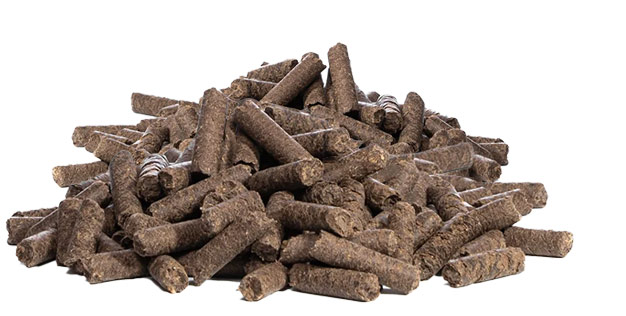
Sugar Beet Pulp Pellets
Sugar beet pulp pellets is gaining popularity as feed for livestock. It is a by product extracted from the process of converting sugar beets into sugar. The main reason why people use beet pulp for livestock feeding is because of its nutritional value. In other words, it is a great source of digestible fiber and energy. Moreover, beet pulp offers numerous vitamins and protein to animal feeds.
Sugar beet pulp pellets can be used alone or in combination with other feeds. It is ideal for beef cattle, dairy cattle, swine, poultry, horses, sheep, and goats. The product offers numerous benefits such as better gut health and feed conversion rates.
Characteristic
Origin
Appearance
Nutritional Content
Digestibility
Energy Value
Palatability
Water Absorption
Uses
Storage
Origin
Appearance
Nutritional Content
Digestibility
Energy Value
Palatability
Water Absorption
Uses
Storage
Characteristics of Sugar Beet Pulp Pellets
Description
By-product of sugar beet processing
Shredded, pelleted, or dried form
High in fiber (around 15-20%), moderate protein (about 7-10%), low in fat
Highly digestible fiber, beneficial for gut health in livestock
Provides a moderate amount of energy, comparable to hay or forage
Generally well-accepted by livestock, often used to enhance feed intake
Can absorb large amounts of water, making it useful for preventing dehydration
Commonly used in livestock feed, especially for horses, cattle, and sheep
Requires dry, cool storage conditions to prevent mold and spoilage
By-product of sugar beet processing
Shredded, pelleted, or dried form
High in fiber (around 15-20%), moderate protein (about 7-10%), low in fat
Highly digestible fiber, beneficial for gut health in livestock
Provides a moderate amount of energy, comparable to hay or forage
Generally well-accepted by livestock, often used to enhance feed intake
Can absorb large amounts of water, making it useful for preventing dehydration
Commonly used in livestock feed, especially for horses, cattle, and sheep
Requires dry, cool storage conditions to prevent mold and spoilage
Exploring the Uses and Benefits of Sugar Beet Pulp Pellets
Beet pulp is commonly used in cattle and sheep feeds to improve digestive health and boost productivity. The main applications include:
- Adding 10-20% dried beet pulp to dairy rations can increase milk production by 10-15%;
- The highly digestible fiber increases nutrient absorption without negatively impacting milk components;
- Beet pulp is low in starch, so it prevents rumen acidosis issues common with grain-based feeds.
Dairy Cattle Feed
- Including beet pulp in high concentrate finishing rations helps promote weight gain while maintaining rumen health;
- The sugar and fiber provide readily available energy while the pulp roughage supports digestion. Weight gains can improve by 10-20% over grain alone.
Beef Cattle Feed
- Beet pulp provides an excellent source of fermentable energy and nutrients for small ruminants;
- It helps improve body condition score and fertility in sheep and goats. Especially useful for late gestation and lactation.
Sheep and Goat Feed
Compared to other byproduct feeds like soy hulls or wheat middlings, beet pulp stands out with its high palatability and excellent digestibility. Livestock readily consume rations containing beet pulp. The highly digestible fiber and sugars make its energy very available to animals. Beet pulp also contains more calcium, phosphorus and sulfur than most byproduct feeds.
This nutrient density combined with the positive impacts on digestion make beet pulp an excellent feed additive, especially for ruminant livestock.
This nutrient density combined with the positive impacts on digestion make beet pulp an excellent feed additive, especially for ruminant livestock.
Recommended Feeding Rates
When formulating livestock rations, beet pulp inclusion rates should be set depending on the animal species, size, growth stage, and production level. Typical recommendations are:
This is the general recommendation for offering beet pulp for animals. However, you can adjust it based on numerous factors. Climate, feedstuff expenses, and nutritional targets are to name a few. While adjusting the feed amount, you will need to keep an eye on animal health and productivity. You may also seek the assistance of a professional animal nutritionist. Then you can get better recommendations on how much you should be feeding your animals.
Feeding Beet Pulp to Dairy Cattle
- Lactating cows: 8-12 lbs. dried beet pulp per head daily
- Dry cows: 4-8 lbs. per day
- Heifers and calves: 2-5 lbs. per day
Feeding Beet Pulp to Beef Cattle
- Finishing cattle: 10-20 lbs. per day (up to 40% of ration dry matter)
- Growing cattle, stockers: 3-8 lbs. per day
- Cows: 5-10 lbs. per day
Feeding Beet Pulp to Sheep
- Rams & ewes: 0.5-1.5 lbs. per head daily
- Lambs: Up to 0.75 lbs. per day
Feeding Beet Pulp to Horses
- Performance horses: 2-5 lbs. per 1000 lbs. bodyweight
- Leisure horses: 1-2 lbs. per 1000 lbs. bodyweight

After getting beet pulp for horses and livestock, you should be careful with transportation and storage. It will help you with ensuring feed quality throughout. Here are some tips that you can follow for it.
Transporting and Storing Sugar Beet Pulp Pellets
Transportation of Beet Pulp
- You need to inspect the trucks and make sure that they are clean;
- Be careful when you load beet pulp into the trucks. This is where you should prevent compression of the pulp bales;
- You need to cover up beet pulp when transporting. This can help you to protect them from road debris;
- You should avoid moisture at all times. This is why you shouldn’t transport them under rainy weather conditions;
- Make sure to use ventilated trailers when transporting beet pulp;
- You should minimize transportation time in order to reduce the risk of mold growth or heating.
Storage of Beet Pulp
- Store in clean, dry areas protected from weather elements;
- Reduce temperature fluctuations by storing in insulated buildings if possible;
- Maintain air circulation around beet pulp piles or bales;
- Keep wet beet pulp from pressing/compacting while stored;
- Limit wet pulp storage time to less than 48 hours ideally;
- Store dried pulp bales on pallets and keep spaced apart;
- Monitor internal pulp temperatures; do not exceed 120°F;
- Inspect regularly for mold, avoid storing for over 12 months.
Following these guidelines preserves feed quality. Always inspect beet pulp for spoilage, mold or heating before feeding to livestock. Discard any compromised feed products to avoid reduced palatability or animal illness. Maintaining optimal storage conditions ensures beet pulp retains its nutritional value. You should follow these tips when dealing with both sugar beet pulp and equine beet pulp.
Wet Beet Pulp
- Harvest/haul year-round as it can spoil quickly;
- Requires special handling and rapid processing protocols.
Dried Beet Pulp
- Stable for longer storage up to one year;
- Lower transportation costs than wet pulp;
- Can be packaged in bags or bales.
Feeding Recommendations for Cattle
Beet pulp provides many nutritional and health benefits when included in cattle diets. Follow these guidelines for optimal results when feeding to dairy cows, beef cattle, or replacement heifers:
For high producing dairy cows, feed dried or molassed beet pulp at 10-20% of the total mixed ration (on a dry matter basis). This equates to 8-12 lbs. of dried beet pulp per cow daily. Levels can be adjusted based on milk production, body condition, and other diet ingredients.
Ensure adequate long stem forage is also included in the diet, at minimum levels of 0.75% of bodyweight. The beet pulp is highly digestible while the forage stimulates chewing to maintain rumen health.
Gradually transition cows onto beet pulp rations when introducing it or increasing amounts. Changes should be made over 10-14 days. Monitor manure consistency and watch for signs of digestive upset.
Ensure adequate long stem forage is also included in the diet, at minimum levels of 0.75% of bodyweight. The beet pulp is highly digestible while the forage stimulates chewing to maintain rumen health.
Gradually transition cows onto beet pulp rations when introducing it or increasing amounts. Changes should be made over 10-14 days. Monitor manure consistency and watch for signs of digestive upset.
Dairy Cows
Beet pulp makes an excellent supplement in high concentrate finishing rations for beef cattle. It can replace up to 20-40% of the grain portion of the diet (on a dry basis).
Include 10-20 lbs./head daily for finishing cattle in feedlots. Beef stockers and replacement heifers do well at 3-8 lbs. of beet pulp per day depending on body size and desired growth rates.
Mix beet pulp thoroughly into total mixed rations. Ensure feed bunks, automatic feeders, etc. allow cattle to consume their full allotted amount.
Include 10-20 lbs./head daily for finishing cattle in feedlots. Beef stockers and replacement heifers do well at 3-8 lbs. of beet pulp per day depending on body size and desired growth rates.
Mix beet pulp thoroughly into total mixed rations. Ensure feed bunks, automatic feeders, etc. allow cattle to consume their full allotted amount.
Beef Cattle
Feed 2-5 lbs. of beet pulp per head daily to growing dairy heifers, beef calves, and other youngstock. Levels can increase up to 10% of the ration dry matter for animals under 12 months of age. Benefits include improved growth rates and better feed efficiency.
If you are looking forward to buying beet pulp for your livestock, feel free to contact us. We can help you to get the best quality products available out there.
If you are looking forward to buying beet pulp for your livestock, feel free to contact us. We can help you to get the best quality products available out there.



